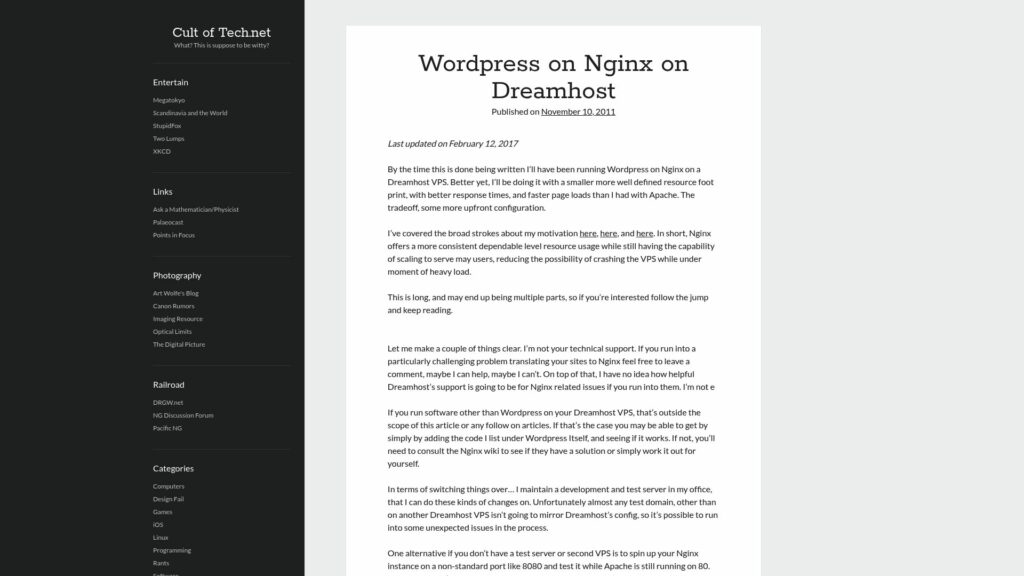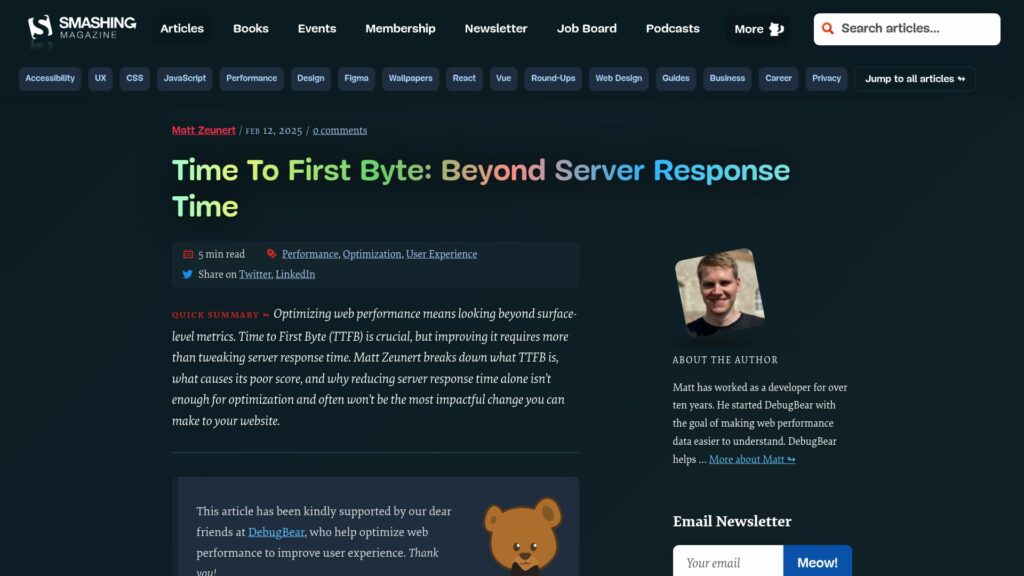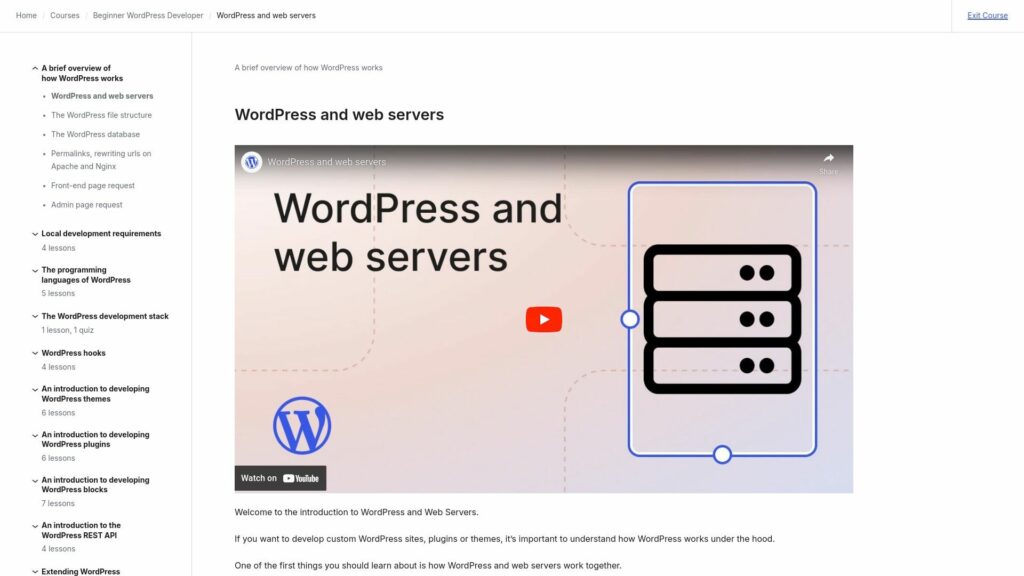WordPress on Nginx on Dreamhost
Running WordPress on Nginx via Dreamhost VPS improves resource efficiency and page load times compared to Apache, but requires upfront configuration. Nginx handles PHP differently, lacking .htaccess and mod_rewrite support, thus necessitating custom configurations for pretty permalinks and caching plugins. Key configurations include directives for content handling, cache rules, and error troubleshooting. Backing up existing setups and understanding Nginx's syntax is critical for a smooth transition. Proper pre-configuration ensures a seamless switch from Apache to Nginx, enabling improved performance for WordPress sites.
https://www.cult-of-tech.net/2011/11/wordpress-on-nginx-on-dreamhost/


